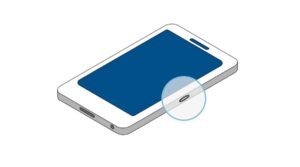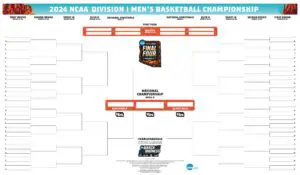If you’re wondering how to test trailer lights with a battery, we have the solution for you. It’s a quick and simple method that will ensure your trailer lights are functioning properly before hitting the road. No need to worry about complicated tools or expensive equipment. With just a battery and a few minutes of your time, you’ll be able to determine if your trailer lights are working as they should. So, let’s dive right in and discover how to test trailer lights with a battery.
How To Test Trailer Lights With A Battery
Trailer lights play a crucial role in ensuring road safety when towing a trailer. However, like any other electrical component, they can sometimes fail. When faced with non-functional trailer lights, it is essential to diagnose the problem and fix it promptly. Fortunately, you can easily test trailer lights using a battery to determine whether the issue lies with the lights themselves or the electrical system. In this guide, we’ll walk you through the step-by-step process of testing your trailer lights with a battery.
Materials You’ll Need
Before diving into the testing process, gather the following materials:
- A 12-volt battery (you may use a car battery)
- Alligator clips
- A wrench or screwdriver, depending on your trailer’s wiring connections
- A test light or multimeter (optional)
Step 1: Disconnect the Trailer
To avoid any electrical mishaps, disconnect the trailer from the vehicle. This step ensures that the trailer lights won’t interfere with the vehicle’s electrical system during testing.
Step 2: Identify the Trailer Light Wiring System
Trailers typically have either a 4-wire or a 7-wire electrical system. It’s crucial to know which system your trailer uses to perform an accurate test. Here’s a breakdown of the two systems:
4-Wire Trailer Light System
A 4-wire trailer light system consists of the following wires:
- Brown wire: Tail lights
- Yellow wire: Left turn/brake lights
- Green wire: Right turn/brake lights
- White wire: Ground
7-Wire Trailer Light System
A 7-wire trailer light system includes the following wires:
- Black wire: 12V power supply
- Blue wire: Electric brakes or auxiliary power
- Red wire: Left turn/brake lights
- Brown wire: Right turn/brake lights
- Yellow wire: Auxiliary/reverse lights
- Green wire: Tail lights
- White wire: Ground
Step 3: Connect the Battery
Now it’s time to connect the battery to the trailer lights. Follow these steps:
- Identify the positive and negative terminals on the battery. The positive terminal is usually labeled with a “+” sign, while the negative terminal has a “-” sign.
- Attach an alligator clip to the positive terminal of the battery.
- Securely connect the other end of the alligator clip to the wire that corresponds to the tail lights (brown wire in a 4-wire system or green wire in a 7-wire system).
- Take another alligator clip and attach it to the negative terminal of the battery.
- Connect the other end of the alligator clip to the white wire (ground wire) of your trailer.
Step 4: Test the Trailer Lights
Once the battery is connected, it’s time to test the trailer lights. Follow the steps below:
- Turn on the battery by connecting the negative alligator clip to the battery’s negative terminal.
- Check if the tail lights turn on. If they do, it’s a positive sign that the wiring and connections for the tail lights are functioning correctly.
- Next, activate the left turn signal on the battery by connecting the positive alligator clip to the battery’s positive terminal.
- Verify if the left turn/brake lights illuminate. If they do, it indicates that the left turn/brake light wiring and connections are working correctly.
- Repeat the same process for the right turn signal by connecting the positive alligator clip to the battery’s positive terminal.
- Ensure that the right turn/brake lights illuminate to confirm proper wiring and connections.
- If your trailer has additional lights, such as reverse lights or auxiliary lights, test them using the respective wires and the battery.
Step 5: Inspect for Issues
After testing each light, inspect for any issues in the wiring or connections. Here are some common problems you may encounter:
- Flickering lights: This could be due to loose connections or a weak battery. Double-check the connections and consider testing with a different battery.
- Non-functional lights: If a light doesn’t illuminate, it could be a result of a blown bulb, a broken wire, or a faulty socket. Inspect and replace any faulty components.
- Dim lights: Dim lights often indicate a poor ground connection. Ensure the white wire (ground wire) is securely connected to a clean, metal surface on the trailer’s frame.
- Intermittent operation: If lights work sporadically, there may be a loose connection or a damaged wire. Examine the wiring for any signs of damage and tighten any loose connections.
Step 6: Fixing the Issues
Once you’ve identified the problem with your trailer lights, you can take the necessary steps to fix the issue. Here are some troubleshooting tips:
- Bulb replacement: If a bulb is burnt out, replace it with a new one of the same type and wattage.
- Wire repair: For broken or damaged wires, carefully cut out the damaged portion and reconnect the wires using appropriate connectors or soldering.
- Socket replacement: If a socket is corroded or damaged, replace it with a new one compatible with your trailer light system.
- Ground connection improvement: Clean the ground connection area and ensure a solid connection to the trailer’s frame to improve grounding.
Step 7: Reconnect the Trailer
After fixing any issues, reconnect the trailer to your towing vehicle, ensuring all connections are secure. Test the trailer lights with your vehicle’s electrical system to ensure everything is functioning correctly.
Testing trailer lights with a battery is a simple and effective way to diagnose issues and ensure your trailer is road-worthy. By following the step-by-step process outlined in this guide, you can identify and fix problems with your trailer lights, promoting safety on the road. Remember to regularly inspect and maintain your trailer lights to prevent any potential issues before they arise.
How to quickly and easily test trailer lights with a battery
Frequently Asked Questions
How can I test trailer lights with a battery?
To test trailer lights with a battery, you can follow these steps:
What type of battery do I need to test trailer lights?
You will need a 12-volt automotive battery to test trailer lights. Make sure the battery is fully charged before testing.
How do I connect the battery to the trailer lights?
To connect the battery to the trailer lights, you will need jumper wires or alligator clips. Connect the positive terminal of the battery to the positive terminal of the trailer lights, and then connect the negative terminal of the battery to the negative terminal of the trailer lights.
What should I do if the trailer lights do not turn on?
If the trailer lights do not turn on after connecting the battery, check the connections to ensure they are secure. Also, inspect the wiring for any damages or loose connections. If everything seems fine, it’s possible that the lights or the wiring harness may need to be replaced.
How can I test each function of the trailer lights?
To test each function of the trailer lights, use a test light or a multimeter. Connect the test light or multimeter to the different terminals of the trailer lights, and then activate each function (e.g., turn signals, brake lights, running lights) to see if the corresponding light illuminates or if the multimeter detects a current.
Is it important to test trailer lights before every trip?
Yes, it is crucial to test trailer lights before every trip to ensure they are functioning correctly. Properly working lights are essential for visibility and safety on the road.
Final Thoughts
Testing trailer lights with a battery is a simple and effective way to ensure they are functioning properly. By connecting the positive terminal of the battery to the trailer’s positive wire and the negative terminal to the trailer’s negative wire, you can easily test each light individually. Using a test light or multimeter, check for any signs of illumination or voltage. By carefully following this process, you can quickly identify any issues with your trailer lights and address them accordingly. So, if you are looking to test your trailer lights with a battery, follow these steps for a hassle-free experience.



